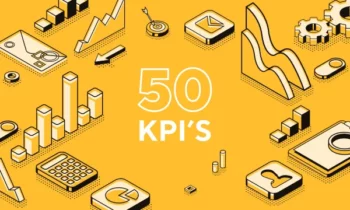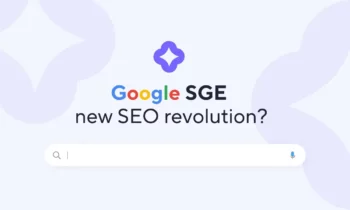KNOW – FEEL – DO, or how to structure your communications for maximum impact
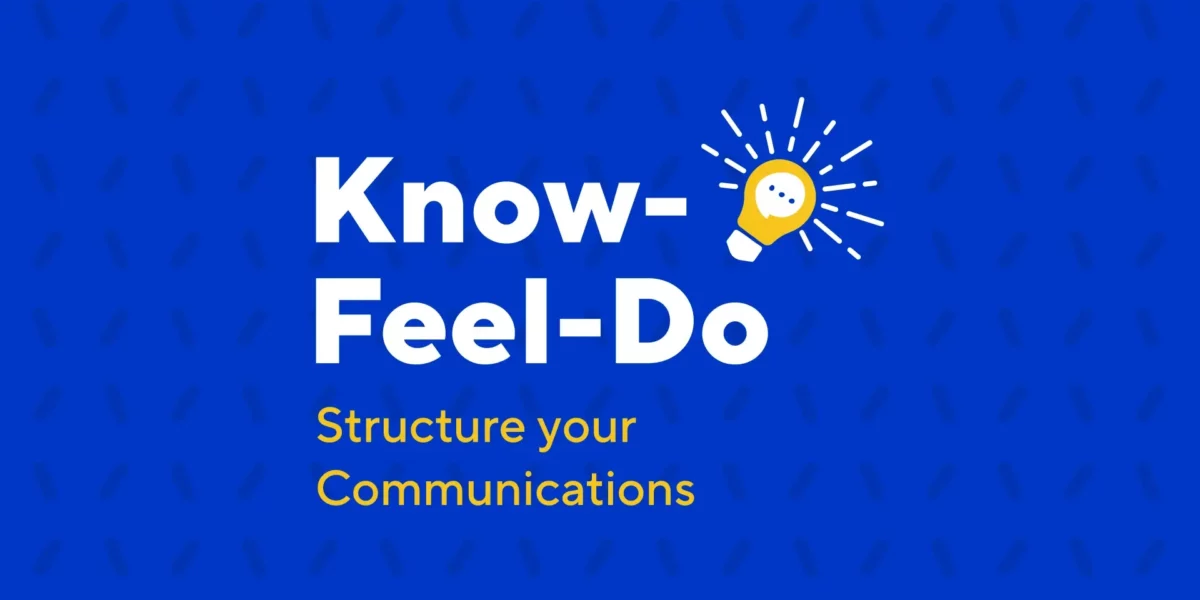
Can we communicate anything to anyone?
Used in both internal and external communications, this model has proven its effectiveness, especially in its simplicity of use. Applying it is a guarantee of quickly becoming an expert. Indeed, the method helps you better understand your target audience to offer them a message that aligns with their values and captures their attention.
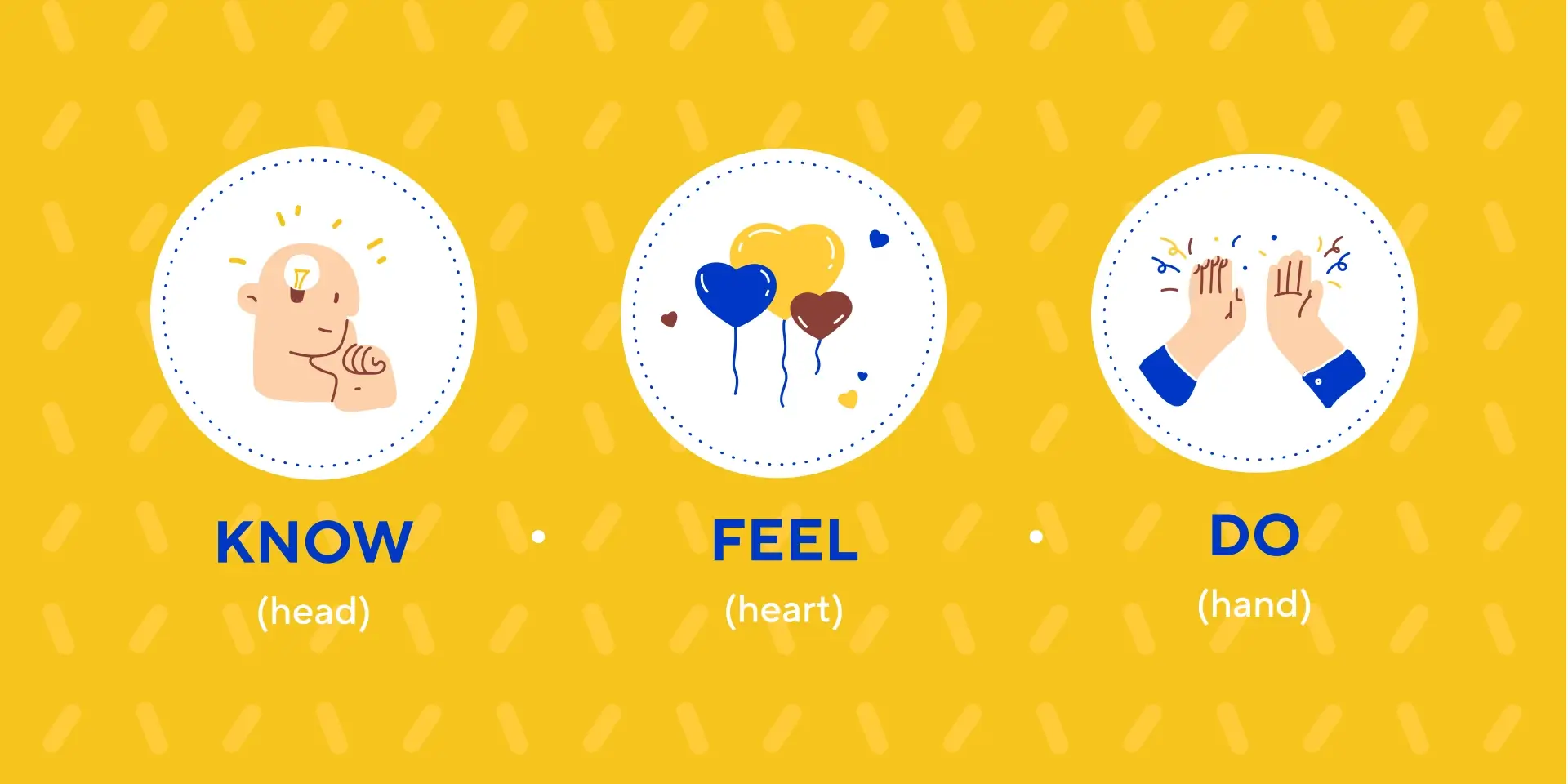
The KNOW – FEEL – DO model revolves around 3 questions:
- KNOW (the head): What does my audience know, and what do we want them to know ?
- FEEL (the heart): What does my audience feel, and what do we want them to feel ?
- DO (the hands): How do we want the audience to act ?
Most of the time, the KNOW aspect is used by creating content with what the company wants to convey, without truly questioning the audience’s interests. Understanding the audience and eliciting a response from them takes time. The goal is to use a method that saves this time to optimize communication campaigns.
In short, the model enables addressing a clear and powerful message that prompts a reaction to engage the audience, whether internal or external, in taking action (conversion).
A simple exercise ? Application internally
The tool is also useful for managers in how they address their team members. The approach enables them to be more persuasive and effective. Here’s how :
Example 1
Imagine you want to present graphs showing the progression of negative feedback on the after-sales service to the service team.
Take the time to ensure your team understands the methodology and interprets the results correctly. Motivate them to take necessary actions without offending anyone. Remember that you had time to study and analyze the numbers, so give them the time to understand and activate the necessary levers for change.
Example 2
Know: I want to send an email to my teams with the first version of the new visual guidelines.
Feel: I want them to feel involved in this new project.
Do: I need a quick response to this email with their opinions and suggestions.
In a few lines, you have clarified your project, and now you can write your email with its objective in mind. Now, the question is: how? How can you encourage your team members to respond to the email constructively? Put yourself in their shoes: Why change the visual guidelines? What values and emotions should it convey?
La méthode peut, dans un premier temps, être utilisée comme une impulsion, pour régler ou clarifier une situation, retrouver l’attention de vos employés en réunion, par exemple. Et, dans un second temps, de manière plus réfléchie et disciplinée pour de plus grands projets.
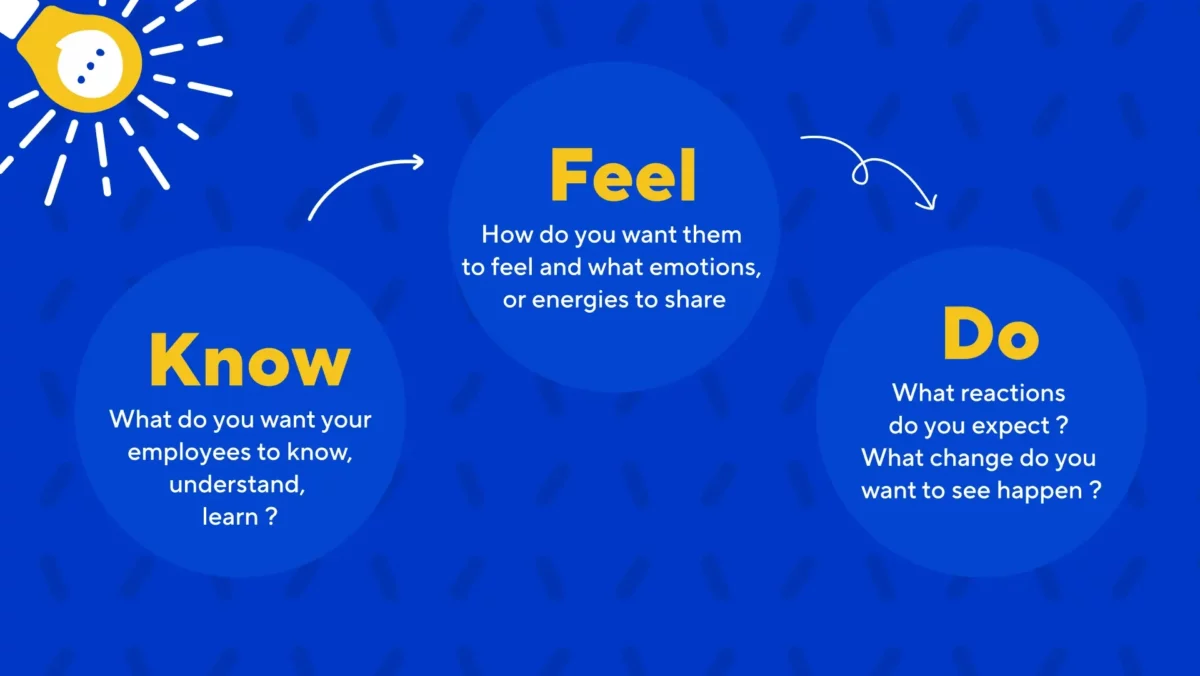
With your clients
To guide your communication with your prospects and clients, you can structure your thoughts around these 3 questions. They will help you define a clear message.
Know: Start with what you want your audience to know above all else. Be direct and to the point. You can achieve this in a sentence, and if you don’t find a clear message, keep working on it until you do.
Feel: You can’t control how the audience feels, but you can consider the emotional impact you want to achieve. Will it be a rational, pragmatic message, or one filled with emotion? Find the balance between appealing to the head and the heart.
Do: Determine the objective of the campaign in a few words and be as clear and concise as possible by asking yourself what you want your audience to do.
Example
Know: I want to create an Instagram Story advertisement for the launch of my new range of roasted coffee.
Feel: It should evoke curiosity and desire, making them feel the aroma of the coffee behind their screens.
Do: Initially, I want to generate views for product and brand awareness and convert clicks into purchases.
This exercise allows you to explore thoughts and behaviors and can be applied to each persona. While it may seem extreme to do it for each profile, it will help determine priorities, such as setting a campaign budget.
Whether you are writing a landing page, an Instagram post, or a newsletter, you want to increase the chances that your message will be read and generate action. With impactful content, you can create an emotional connection that leads to conversion.
Advice ?
To go further, you can integrate the Know – Feel – Do model with the empathy map, and the model will take a logical place. Then, you can establish a very precise profile of your customers or your collaborators.
What’s next ?
It’s up to you to take action! Why not try it right now? You have nothing to lose.
When preparing your next publication, ask yourself these 3 questions.
